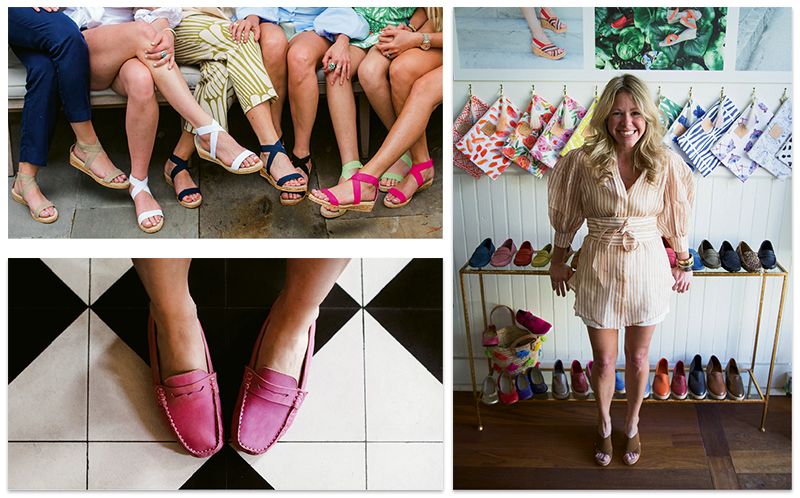Charleston Shoe Co.’s stepping out all over the U.S.—and beyond

(Clockwise from bottom left) The “Tradd” loafer and (above) “Easton” sandals; CEO Neely Powell in her King Street shop
“I love to tell people that I’m a 22-year overnight success,” laughs Neely Powell, CEO of Charleston Shoe Co. After all, she began selling footwear while still a student at College of Charleston. It all started on a 1996 trip with her mother—who founded wholesale interior furnishings biz Worlds Away—to San Miguel de Allende, Mexico. There, Powell discovered a cobbler whose sandals were a favorite among villagers and visitors alike.
Loving the shoes’ simple design and comfort, she began importing them into the States and “selling them beneath the tables at my mother’s furniture markets,” she recalls. “Next thing I knew, I had wholesale accounts across the country and 15 years later, my first store.” That shop, Savannah Shoe Co., marked the start of Powell’s own line of hand-sewn footwear. Soon, it was followed by the Charleston Shoe Co., which the entrepreneur opened on lower King at a time when “every commercial agent I met with thought I was crazy,” she says. And yet, business took off.
Today, Powell still works with the same cobbler to create styles for women—ranging from sandals to boots—and for men and kids. Charleston Shoe Co. has 15 locations in the United States plus one in San Sebastian, Spain, “And this year, we plan to open six stores in California, as well as four more on the East Coast,” adds Powell. As for locals? You can shop the colorful, comfortable offerings at the original King Street boutique or in Charleston City Market’s Great Hall.
Sole Searching
A look at the process that brings the brand’s shoes to market
1. Design: Neely Powell, who holds an accessories design degree from SCAD, works with her cobbler and staffers to design women’s sandals, boots, flats, and more; men’s loafers; and four looks for kids.
2. Handcraft: In San Miguel de Allende, Mexico, the company’s cobbler and his team of 70 artisans hand-sew the shoes, using elastics and rubber soles made in Mexico and linens sourced from Italy.
3. Sell: From a Charleston warehouse, the brand distributes footwear to its 16 stores in the United States and Spain, as well as more than 350 wholesale accounts. Shoes also make their way to buyers via trunk and home shows.
Photographs by (Powell) Brett Tighe & (“Tradd” & “Easton” shoes) Stephanie Adkins Photography